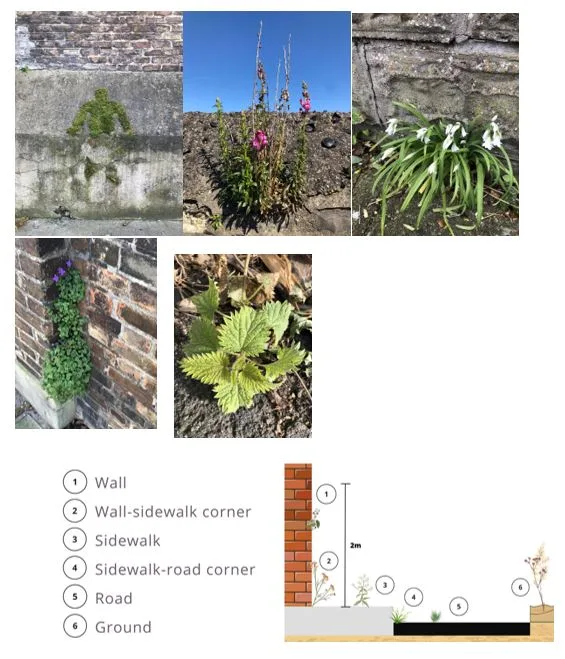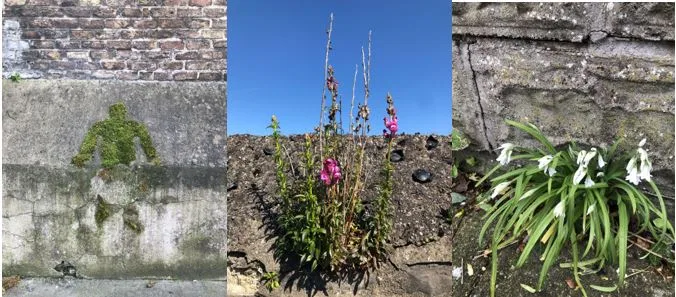By Anna Santallusia,
Visiting Researcher with the NovelEco ERC team,
During the past few months with the NovelEco team, I had been conducting surveys on different novel ecosystems around Dublin city. In those surveys I recorded all the vascular plant species found and their abundances in walls, pavements and grounds of core and peripheral areas of the city. These two areas differed in terms of urban fabric, management and human activity. Being the core area a more compacted area with a more intense management and a higher activity than the peripheral. To compare the biodiversity of these two areas I did a statistical comparison of various diversity indices as well as a calculation of a compositional dissimilarity index. Although I could not find any statistically significant difference between both areas in terms of species richness and evenness, I found half of the composition to be different. However, more sampling effort was needed according to the species accumulation curves that I represented.
Moreover, I also recorded different functional traits for each species found with the use of databases. This allowed me to see how the species overcame the different common city threats, such as: habitat fragmentation, high temperatures and levels of pollution, intensive and irregular level of disturbances and human preferences. These functional traits were: type of dispersal, type of pollination, Leaf Dry Matter Content, lifespan and growth form. I also recorded for each species the ecological life strategy that it had, which is characterized by several trait states. Most of the species were mainly dispersed by humans and self-pollinated. They also followed a competitive or a ruderal strategy, which correlates with most of them being therophytes or perennial hemicryptophytes, with a low LDMC.
This preliminary study pretends to be used as a baseline for further research on urban plants and urban novel ecosystems. With the increase of the global urban population and the associated urban land expansion, this topic is crucial nowadays for biodiversity conservation and the provision of ecosystem services (from mitigation of air pollution to restoration effects on the population). Moreover, understanding plant responses to urban conditions can be a way of making predictions about plant adaptation to global change in the future, as both scenarios have been seen to be analogous (Lambrecht et al., 2016).

